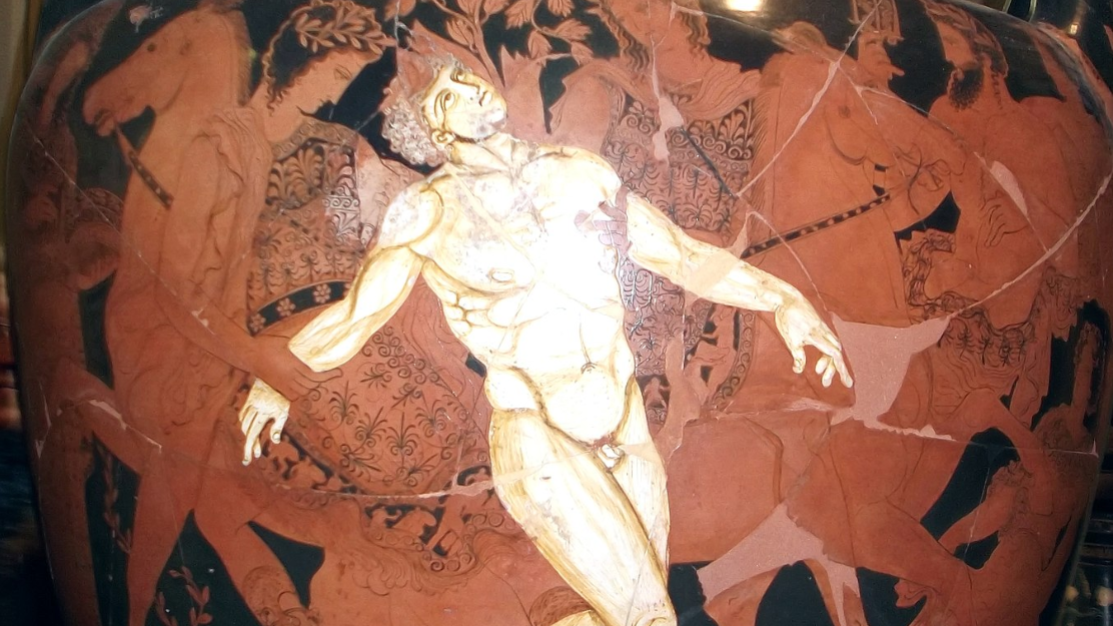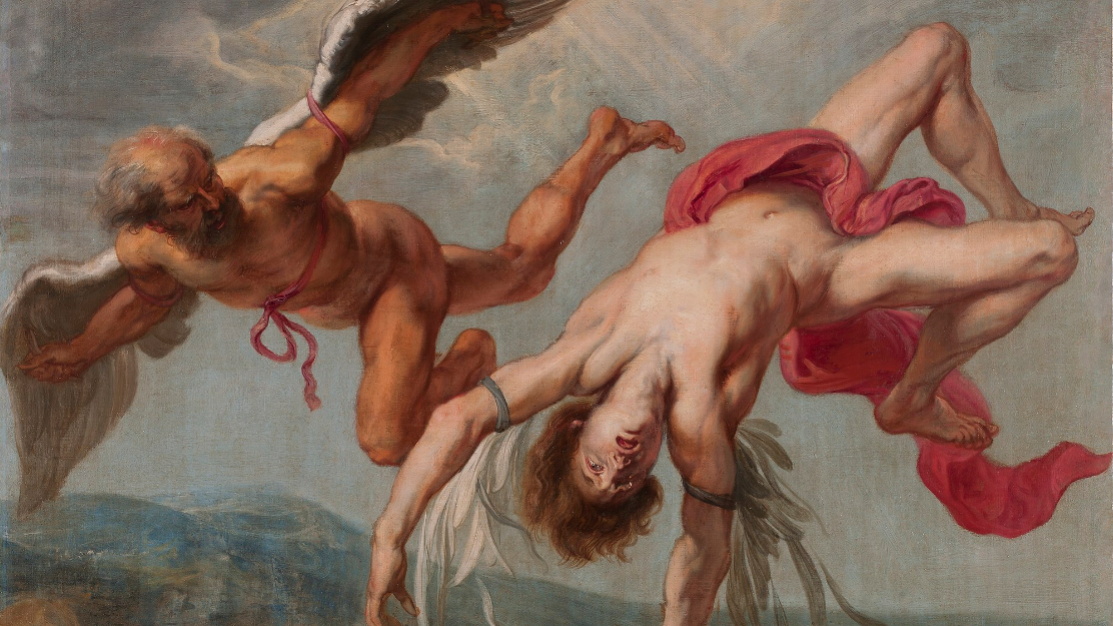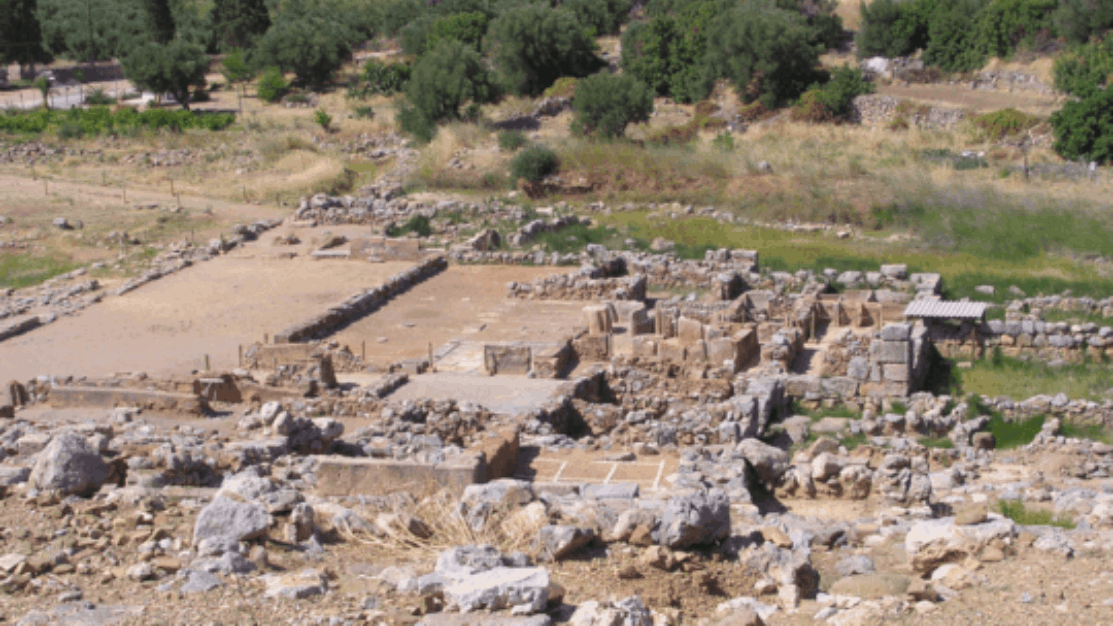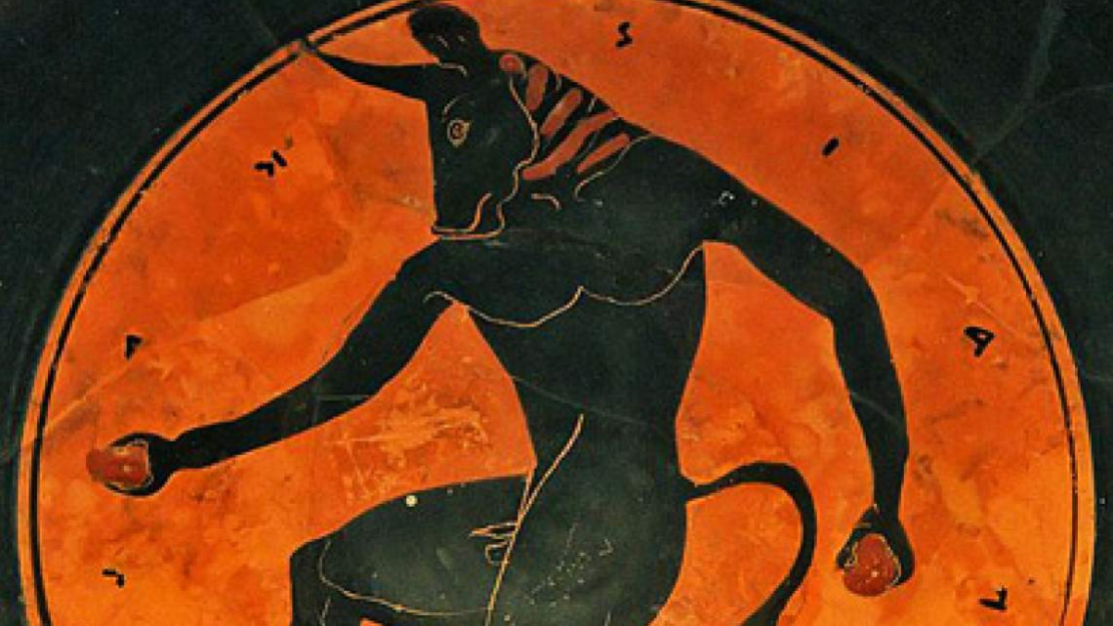The fast copper giant, entrusted with the observance of the law and the protection of Minoan Crete against invaders. What reality does the myth conceal?
Talos. A huge, man – like creature, made of copper. A single vein, filled with the fluid Ichor, ran through his body, keeping him alive. Starting from his neck, it would reach his ankle, where a nail prevented the fluid from spilling. There are many versions of how Talos was created. According to one version of the story (Apollodorus), Hephaestus, the god of iron and fire himself, built him and gifted him to Minos. Another (Apollonius of Rhodes) mentions that he was a gift from Zeus to Europe to protect her, along with a golden dog that missed no game and a quiver with arrows that never missed their target. She would offer Talos to her son Minos.
Image: Part of a volute krater, depicting the death of Talos, 400 BC. Ruvo di Puglia, Museo Jatta (Photo credits: Forzaruvo94, CC BY-SA 3.0)
In any case, he was built to protect Crete from enemies and ensure the dissemination and observance of laws all over the island. For this purpose, he was very strong and fast, so that he could traverse Crete 3 times in a day, carrying copper plates on his back, upon which the divine and just law was engraved. According to others, he was winged, and coins represent him as bearing wings on his shoulders, a symbol of his supernatural speed.
Perhaps a reason why Minos felt so safe with no walls surrounding the cities of Crete was the presence of the sleepless guard, Talos, who would throw huge rocks at the ships of invaders approaching the island. If, however, an enemy managed to run aground, Talos would burst into flames and give his enemies a mortal embrace, turning them to ashes. According to the legend, when the Sardinians (inhabitants of Sardinia) tried to invade the island, they met this horrible end. Due to the fact that, according to the legend, Talos would burst into laughter upon the demise of his enemies, the expression “Sardonic laughter” was coined, to mean the ironic laughter of the winner in the face of the defeated.
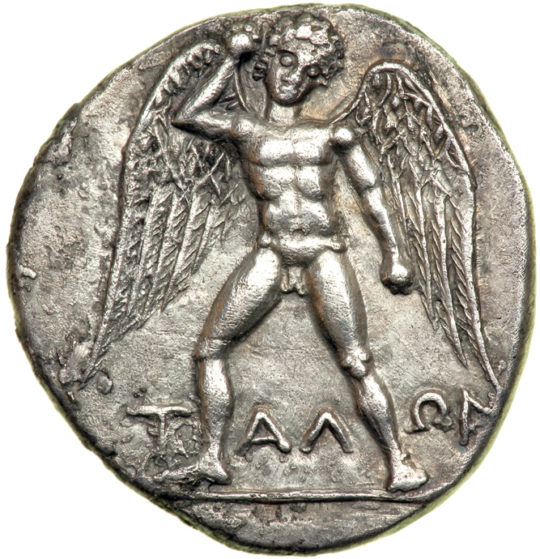
It was not at all easy to find a match for Talos; as mentioned though, he had a soft spot. This was what led to his end, which came from the Argonauts. Upon their return from their adventurous journey, Jason and his crew decided to stop on the south coast of Crete for supplies. They had with them the princess-witch Medea, daughter of the king of Colchis, Aetius, and niece of Pasiphae, wife of Minos. She had fallen in love with Jason, helped him get the golden fleece and run away with him. As their ship Argo approached the shore, the Argonauts came face to face with Talos, who was throwing rocks at them, aiming at sinking the ship. Then Medea began to speak to Talos and enchant him with her mesmerizing words, promising to make him immortal, as Jason removed the nail that kept his only vein closed. Another version of the story sees Talos removing the nail from his ankle himself, under the spells of Medea.
Truth within the myth
The legend of the copper giant conveys the familiarity of the Minoans with technology, complex metallurgy and hydraulic systems, and raises questions about the true progress they made in their achievements. His role also emphasizes how much they valued the institution of justice and the observance of the laws in terms of maintaining unity and as an expression of the divine will of Zeus himself.
Namesake
Apart from Minos's robot, Talos, there was also a man named Talos, the Athenian nephew of the craftsman, architect and inventor Daedalus, son of his sister Perdika. Talos was hardworking and smart, and had studied by his uncle, in his workshop in Athens. One day, meaning to cut a stick, he used the fangs of a snake he had found. The results made him think, and he went on to construct the same teeth on an iron blade. With this tool, he was able to cut up an entire trunk. Thus, the first saw in the world was made. According to the Attic Myth, Daedalus, afraid of losing the lead to Talos, pushed him off the Acropolis, a murder for which he was exiled and ended up in Crete, where he would undertake the construction of the Labyrinth.
